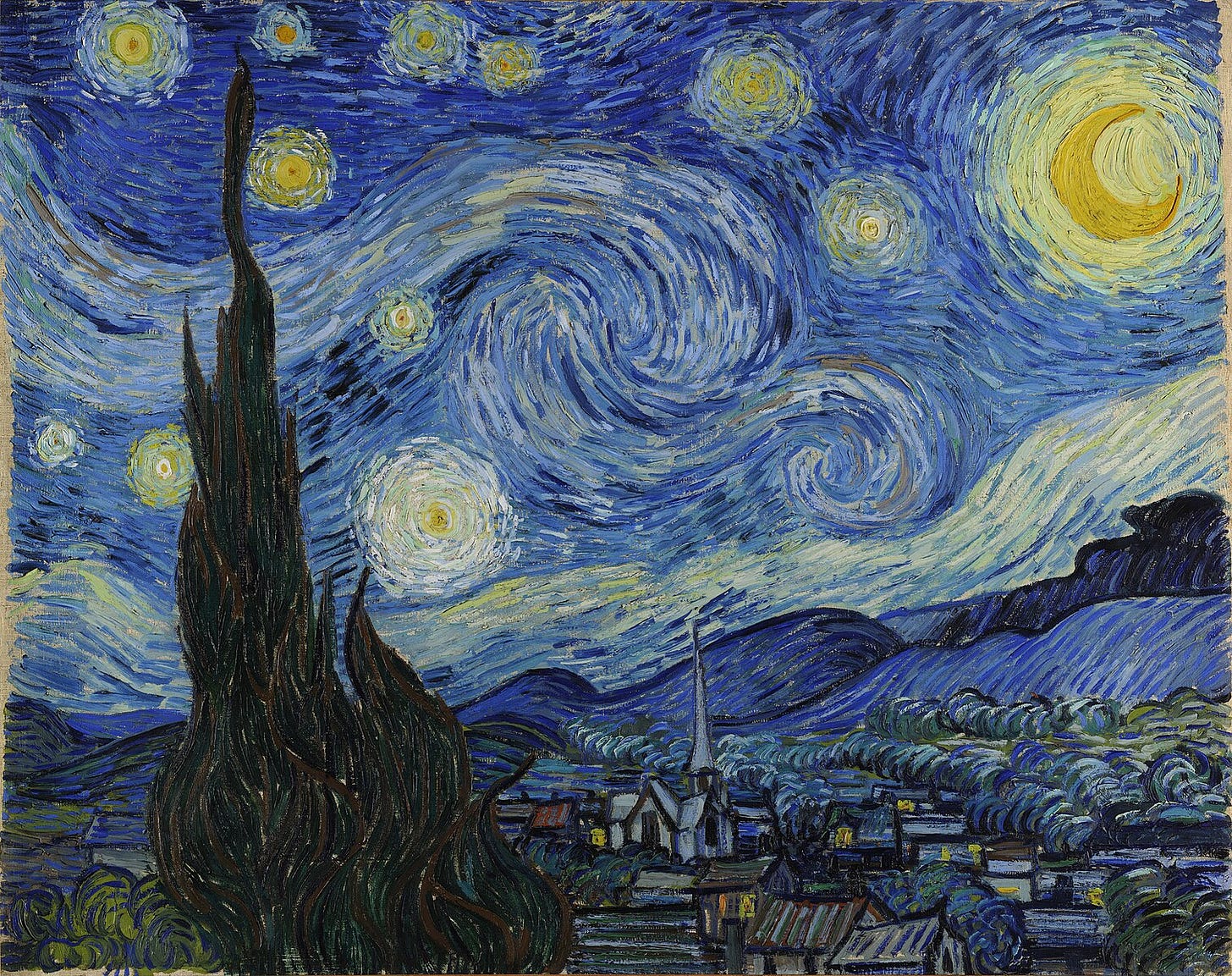Van Gogh's "Starry Night" Up Close
"Just as we take the train to get to Tarascon or Rouen, we take death to reach a star."

Somewhere between reality and dreams lies The Starry Night.
My eyes are first drawn to the center of the composition, where a swirling galaxy teems with the warm light of the stars. Merely a few colors are needed to bring the night to life: shades of blue, violet, yellow, and white. Thick brushstrokes appear in a dash-like pattern, giving the sky unbridled energy, contrasted by the peaceful scene below.



